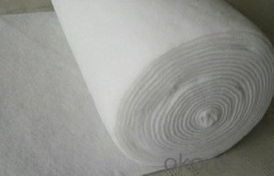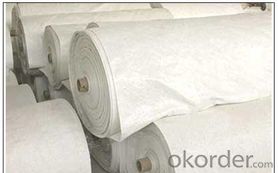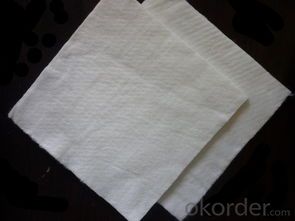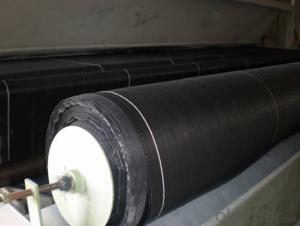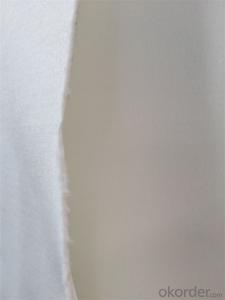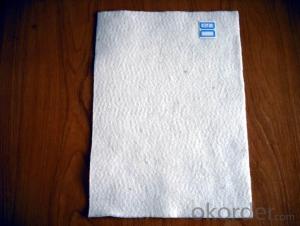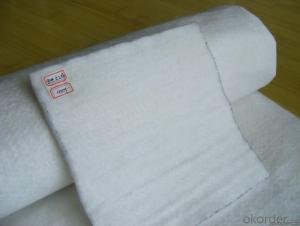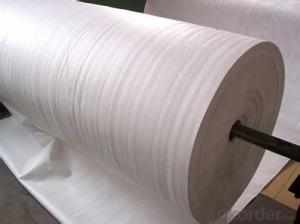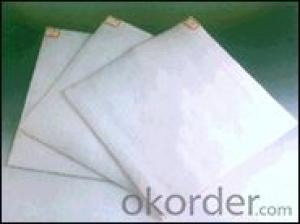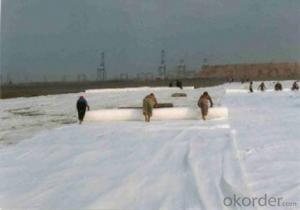Amoco Geotextile Fabric - Polyester Staple Fiber Needle Punched Geotextile
- Loading Port:
- Qingdao
- Payment Terms:
- TT OR LC
- Min Order Qty:
- 1 m²
- Supply Capability:
- 10000000 m²/month
OKorder Service Pledge
OKorder Financial Service
You Might Also Like
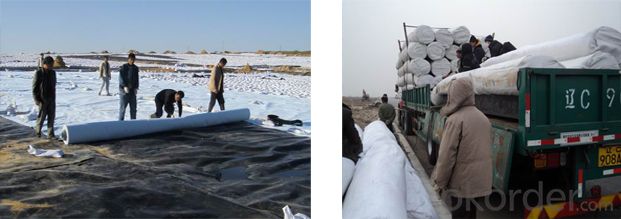
Products overview:
Shandong yongrun nonwoven geotextile polyester staple fiber acupuncture is made of high quality pet staple fiber for raw materials, after carding spread nets acupuncture and processed. Performance characteristics: it has good flexibility, acid and alkali resistance, corrosion resistance, ageing, the intensity is high, the dimension stability, and have good water, filtering, isolation performance, construction is convenient, etc.
Use function:
1, water conservancy project: seawalls, JiangDi river, lake, standard engineering; Reservoir reinforcement engineering; Surround with engineering; reclamation The rescue flood control.
2, the airport highway, rail project; The soft foundation reinforcement; Slope protection; Road surface reflection; Crack "structure layer; Drainage system; Green belt.
3, power plant project: nuclear power plant project based; Thermal power ash dam projects; Hydropower station.
4, port channel engineering: port wharf engineering; Lock engineering; Channel regulation engineering.
The product specification:
Width: 2-7 m, g: 100 g to 800 g/m2.
- Q: What are the long-term performance expectations for geotextile installations?
- The long-term performance expectations for geotextile installations vary depending on factors such as the specific application, the quality of the geotextile material, and the environmental conditions. However, in general, geotextile installations are designed to provide durable and reliable performance for extended periods, typically ranging from 20 to 50 years. Regular maintenance and monitoring can help ensure that geotextile installations continue to perform effectively over the long term.
- Q: Can geotextiles withstand harsh weather conditions?
- Yes, geotextiles are designed to withstand harsh weather conditions. They are made from durable materials that are resistant to UV radiation, moisture, and fluctuating temperatures. Geotextiles provide long-lasting protection and stability in various weather conditions, making them suitable for use in challenging environments.
- Q: Are geotextiles resistant to earthquakes?
- No, geotextiles are not inherently resistant to earthquakes. While geotextiles can provide benefits in terms of soil stabilization and erosion control, they do not have the ability to withstand seismic activity on their own. Additional engineering measures and materials are required to ensure structures are earthquake resistant.
- Q: Geotextile how much money
- Specifications of different quality prices ranging from geotextiles from November last year to the current price rose too much
- Q: What are the advantages of using geotextiles in green building design?
- Geotextiles offer several advantages in green building design. Firstly, they help in erosion control by preventing soil erosion and protecting the surrounding environment. Secondly, geotextiles act as a filtration system, promoting water drainage while retaining fine particles, thus enhancing water quality. Additionally, they provide stability and reinforcement to the soil, ensuring the structural integrity of the building's foundation. Geotextiles also aid in weed control by preventing the growth of unwanted vegetation. Lastly, these materials are often made from recycled materials, making them an eco-friendly choice for sustainable construction practices.
- Q: PET geotextile is what?
- PET for the polyester on behalf of the name, PET geotextile is also divided into many kinds, such as: broken geotextile, filament geotextile, filament weaving, etc., I understand only these. Look at what you mean.
- Q: Can the roof waterproof with geotextiles?
- According to personal circumstances, but suggested to find professional personnel assessment. First of all, professional construction, roof waterproofing is a very test of professional skills work, need to hold the local construction administrative departments issued the job certificate. Professional construction units will be detailed survey and roofing drawings. Survey the actual situation of statistics, regional climate, housing and other factors, with the data obtained to develop professional construction program. Construction will be the future may cause housing flaws in the defect to be repaired, so to prevent the future. Secondly, qualified materials, roof leakage in China, about 20% of the material is unqualified, resulting in leakage of the roof of the situation. So in the choice of roof or roof of the material must meet the relevant national standards, and generally qualified roofing materials will have qualified documents and quality inspection departments of qualified certification. In the choice of decoration materials can request the relevant proof, at the same time to check the decoration materials production date, brand, batch number, specifications and so on information to ensure that the quality of qualified roofing materials. Finally, the acceptance of the project, because the roof or roof environment is very complex, so its decoration construction requirements must be strict. The process needs to have a waterproof, leak-proof, anti-seepage function, the summer high temperature can be high temperature, anti-ultraviolet, cold winter to have anti-freeze-resistant low temperature, daily sunshine to have anti-aging and so on.
- Q: Geotextile now how much money? what is the price?
- Is to be based on market conditions, raw material prices, processing technology to determine the price of geotextile to Hongxiang Li Qian short wire geotextile, for example, t price is generally between 4900-7500 yuan / ton, but the weight of <200g , An increase of 100 yuan / ton; weight> 800g, an increase of 500 yuan / ton. 187 & lt; 6600 & lt; 5604
- Q: Can geotextiles be used in the construction of sports fields?
- Yes, geotextiles can be used in the construction of sports fields. Geotextiles are commonly used as a separation and drainage layer under the playing surface to prevent soil contamination, promote proper water drainage, and enhance the stability and longevity of the field. Additionally, geotextiles can help control erosion and provide reinforcement to the subgrade, ensuring a durable and high-quality sports field.
- Q: What are the experiments required for earthwork dam geotextiles
- The first thing to do is the "unit area quality" and "thickness", followed by "breaking strength", breaking elongation "," CBR broken strength ", and tear strength. Huazhi geotextile for your answer
Send your message to us
Amoco Geotextile Fabric - Polyester Staple Fiber Needle Punched Geotextile
- Loading Port:
- Qingdao
- Payment Terms:
- TT OR LC
- Min Order Qty:
- 1 m²
- Supply Capability:
- 10000000 m²/month
OKorder Service Pledge
OKorder Financial Service
Similar products
Hot products
Hot Searches
Related keywords





